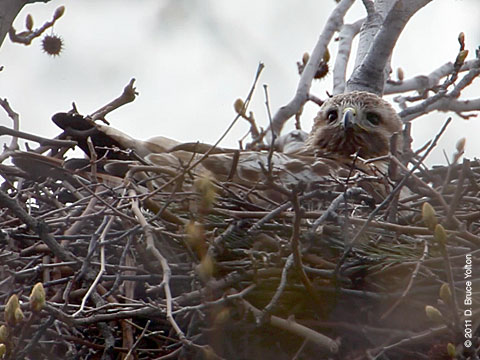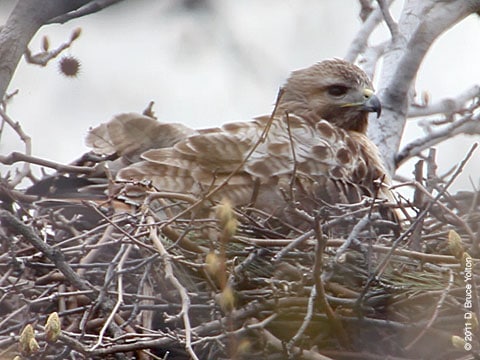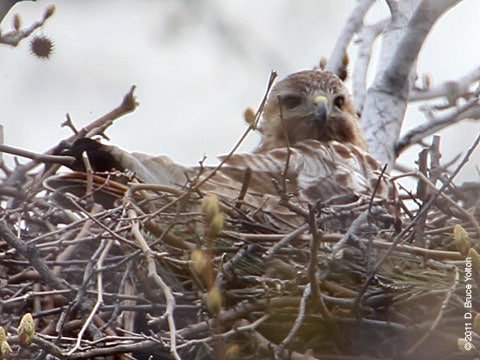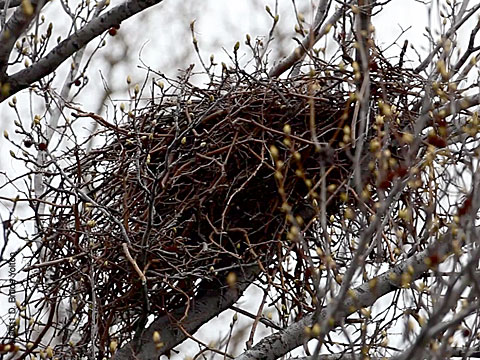The bad news is the adult male Riverside Park hawk ate a dead rat on Wednesday around the dumpsters where the Bromadiolone was placed. Reports on Wednesday were that the male seemed lethargic, but he seemed fine on Friday when I was in the park. Since the poison takes 5-7 days to take effect, we’ve got to keep our fingers crossed. Hopefully, the secondary dose from the rat was low enough not to cause harm to hawk.
Susan B. Elbin, Ph.D., Director of Conservation and Science, New York City Audubon passed along an article from Environmental Contamination and Toxicology, Anticoagulant Rodenticides in Three Owl Species from Western Canada, 1988–2003, Courtney A. Albert, Laurie K. Wilson, Pierre Mineau, Suzanne Trudeau, John E. Elliott. Among the topics the paper discussed was the potential under reporting of deaths caused by non-lethal doses of Anticoagulant Rodenticides. The authors believed that many non-lethal doses which cause lethargy, resulted in increased predation and “accidental” deaths due to collisions and car accidents.
I had always thought about poisons from a perspective of instant “Romeo and Juliet” style poisoning, rather then a more nuanced problem where the poisons act slowly and can cause secondary problems such as infertility in lower doses. Could the two highway accidents in 2009 have been a result not of inexperience fledglings misunderstanding traffic, but a result of non-lethal doses of Rodenticides making the hawks lethargic and therefore misjudging their flight paths? It’s impossible to know, but it does suggest that necropsies should be performed on urban hawks, even if cause of death seems obvious.
Now the excellent news… Both Glenn Phillips, Executive Director, New York City Audubon and Leslie Day, author of the Field Guide to the Natural World of New York City and Boat Basin resident have been having productive discussions with John Herrold, Riverside Park Administrator, Dr. Robert Corrigan, who is in charge of DOH’s rodent control program and Parks Commissioner Adrain Benepe.
From what I understand the discussions have been positive and both short term and long term results should be forthcoming. I can’t thank Glenn and Leslie enough for their efforts on behalf of the Riverside hawk pair. It’s clear that everyone involved is committed to finding a solution to this complicated issue.
Discussions have uncovered topics that weren’t entirely obvious. For example, while the Parks Department has a conservative approach to applying poisons, restaurants in the park are required by the Department of Health to have a rodent control plan. This introduces independent exterminators, who then potentially over apply poisons in the park without Parks Department supervision or oversight. (We saw this a few years ago at the Boat House Restaurant, which mirrored the situation at Riverside. At the Boat House improved sanitation has greatly decreased issues with rodents, and reduced the needs for poisons.)
It’s also been discovered that grass seed is being stored in the open in plastic bags on the lower garage level of the Boat Basin below the café and is attracting rats from the Amtrak train tunnel. Finding a better storage method should become a priority.
I spent about two hours watching the hawks on Friday afternoon. There were no signs the eggs had hatched yet. I saw the father circle overhead, but didn’t see him at the nest. (This isn’t unusual for this pair in the late afternoon.)



